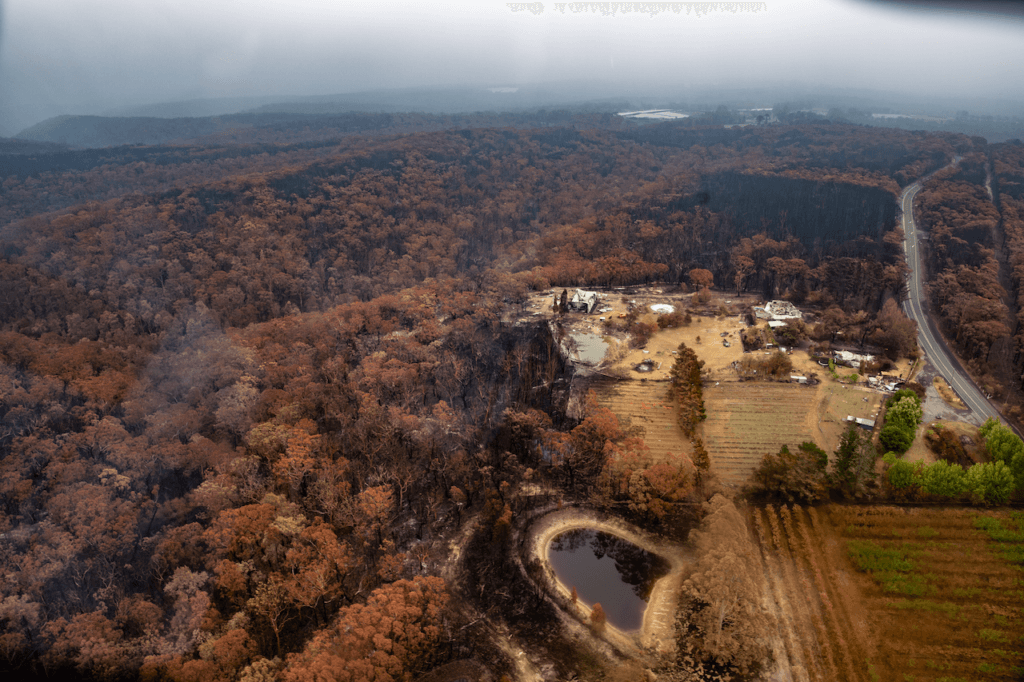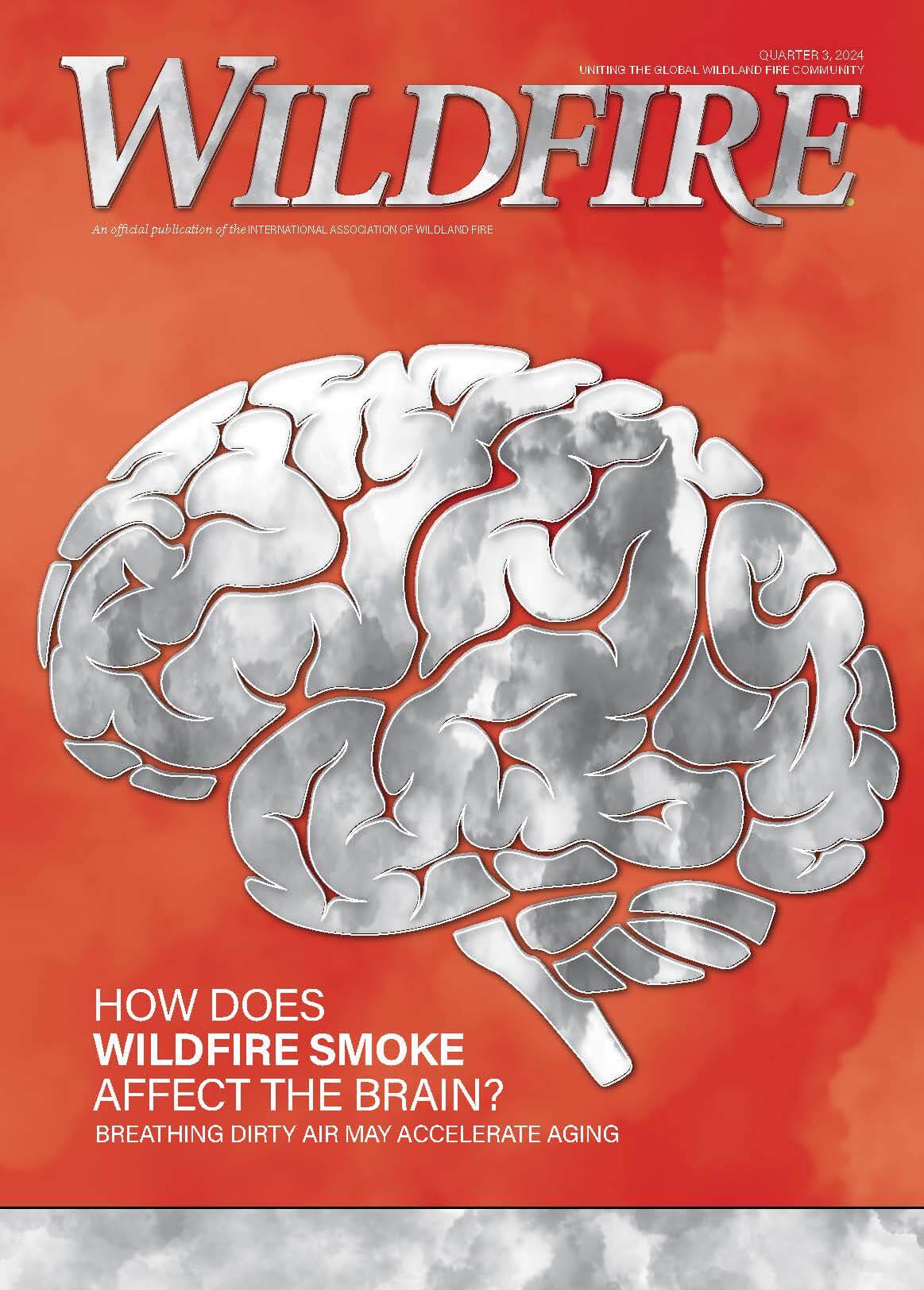
This commentary by Richard Thornton – CEO of the Bushfire and Natural Hazards Cooperative Research Centre (BNHCRC) and former IAWF Board Member – was published in The Weekend Australian on Saturday, January 4, 2020. https://www.theaustralian.com.au/inquirer/doing-more-of-the-same-on-fires-will-not-mitigate-disaster-impact/news-story/e2d831e3383b9d07d1fe36a4124ae9c0 (Paywall required).
by Richard Thornton
Watching this fire season unfold, I am, like I hope every Australian, shocked and horrified by the extent of the destruction. The tragedy, despair and loss across our nation is deeply saddening.
Back in late August, the Bushfire and Natural Hazards Cooperative Research Centre released our bushfire outlook for the coming season showing large areas of eastern Australia facing above-normal potential. Never did we believe that the season would systematically change those red areas on the map to black. I, and on behalf of all those I represent in the research community, extend our condolences to all the communities affected and our heartfelt thanks to all those who have battled the fires so valiantly, and will continue to do so in the months ahead.
To paraphrase American scholar Henry Mencken, there is always a simple solution to every complex problem that is neat, plausible and wrong. That is the position we are in with much of the recent commentary on the causes, impacts and solutions to the bushfires we’ve faced this season across Australia.There are many views on how the fires could have been pre¬vented. More hazard reduction burning or prescribed burning. Lock up those who deliberately start fires. Turn off electricity supplies. Build fire-resistant houses. Get communities better prepared. Don’t live in the bush. Buy more aircraft. Bring in the army. Grow green fire breaks. Stop greenies. Stop climate change. The list gets longer every day.
However, what we are dealing with is a wicked problem and there is a very real risk in attempting to solve this complex issue with simple approaches. This simply makes the problem change but does not get us any closer to solving the problem. Indeed, it can create new problems, sometimes worse than before.
We demand simple answers and yet we know only too well that this is not a simple problem to solve.
Australia has had almost 100 inquiries into fires and fire management between 1983 and 2017, generating many hundreds of recommendations.
These have included royal commissions, parliamentary inquiries and special inquiries with the powers of a royal commission. Many of these recommendations have been implemented with far-reaching changes seen in firefighting operations, landscape management, community safety and urban planning.
Of course, things have improved — a quick glance back at the way the 1983 Ash Wednesday fires or 2009 Black Saturday fires were handled shows much has changed. But maybe even that’s not enough.
It’s not just Australia asking these questions. In the US fires have ripped through communities and displaced thousands in recent years.
The US fire suppression budget is huge and increasing, and it has at its disposal the largest aerial firefighting force in the world. But it seems that’s not enough, either.
I am going to make a prediction. Once this fire season ends, we will have many inquiries that will come up with a new raft of recommendations. History tells us that these recommendations will not be a lot different to those already found. The cycle continues.
What is needed is a quantum shift in our thinking. Just doing the same thing or planning to do the same thing, but just more of it, is a simple solution that is neat and plausible. And wrong.
To pursue the same path is tacitly to say that there is an acceptable number of deaths, injuries and property losses from bushfires in Australia each year. To do more is to lower that number of acceptable impacts. That’s not good enough.
We can learn a lot from the approach we have taken to other complex, wicked problems such as the Towards Zero road safety campaign and the Quit Smoking campaign. The only acceptable targets are absolute — no road deaths, no smoking deaths. But the genius of these campaigns is that they understand the fundamental drivers of human behaviour and the capacity for humans often to make choices that put themselves in danger.
In bushfire, as with most natural hazards, we need to have a better grasp of this complexity to achieve real change. We need solutions that take into account all human, environmental, cultural and economic considerations. And, most importantly, we need to all agree that despite all the good ideas, all the good research, all the goodwill, perhaps we don’t have a complete set of answers yet.
Here is a suggestion for “a national conversation” that could lead into the proposed Council of Australian Governments meeting in March.
To move forward, and to depart from the endless cycle of bushfire crises, we must build upon what we have already done.
Past inquiries: We need to better analyse what we have already found from past fires and other natural hazards. What changes worked, what evidence was critical, what recommendations need to be completed. And which recommendations remain to be implemented because they were “too hard”.
Science and technology: What is our state of knowledge and what more do we need to know about climate and severe weather, fire modelling and suppression, landscape fuels and mitigation, health impacts, land-use planning and building codes, future workforce and community recovery. The National Research Priorities for Natural Hazards Emergency Management, compiled in recent years by the Bushfire and Natural Hazards CRC with experts across Australia, are a good place to start to tell us what more research is needed.
Understanding risk: We have already done the hard work; let’s now concentrate on making it work. Profiling Australia’s vulnerability: The interconnected causes and cascading effects of systemic disaster risk and the National Disaster Risk Reduction Framework both respond to Australia’s adoption of the Sendai Framework for Disaster Risk Reduction 2015-2030.
The Sendai Framework recognises the importance of not only managing disasters but managing disaster risk across all aspects of our society.
This also highlights a focus on understanding the essence of human society’s vulnerability to natural hazard impacts.
When the smoke drifts away and we start the very long road to recovery in the communities devastated by these fires, let us not walk away from them and hide behind simple solutions and inquiries.
This is the time to consider seriously the hard questions and not continue with business as usual. This will require new thinking, new research, new investment and, importantly, new commitment.
